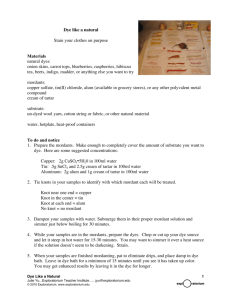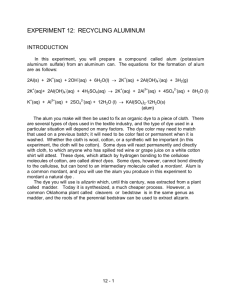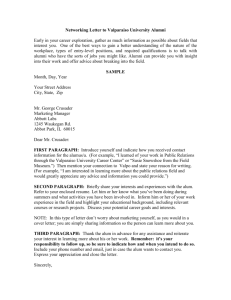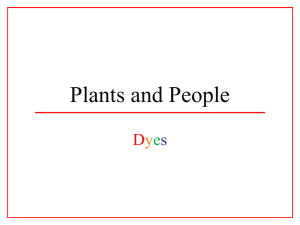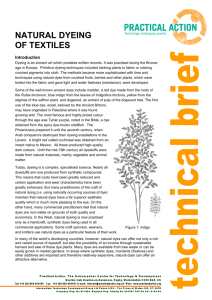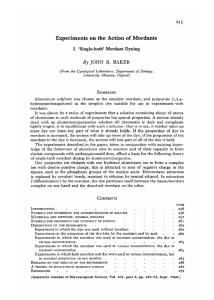Medieval Mordants - Barony of Caer Mear
advertisement
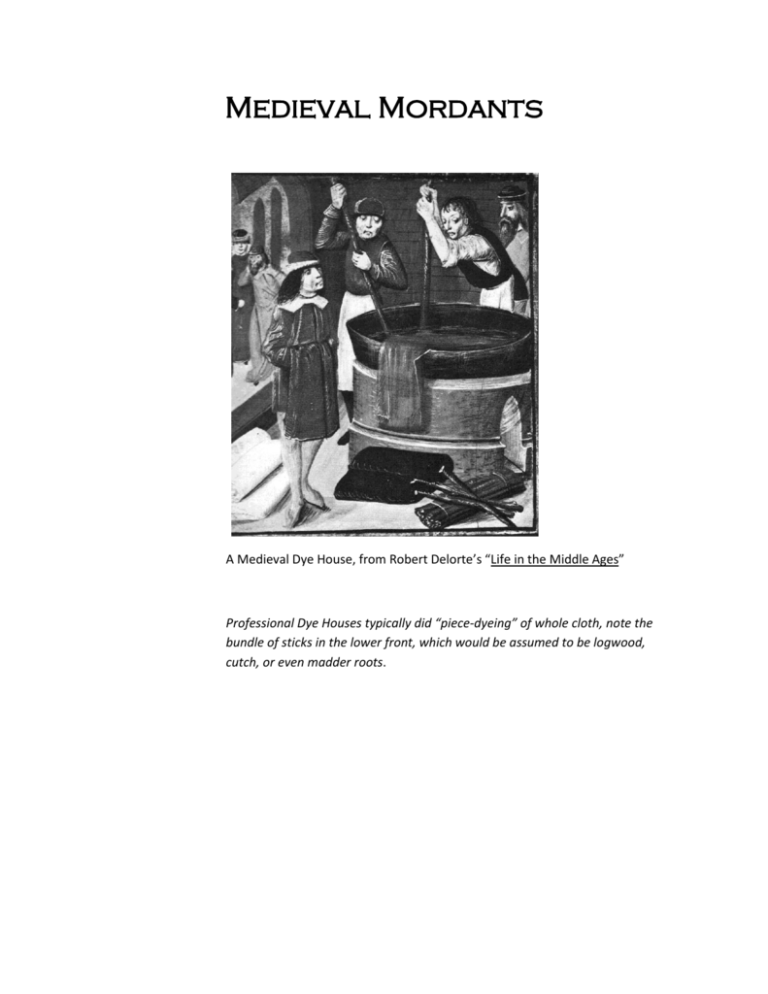
Medieval Mordants A Medieval Dye House, from Robert Delorte’s “Life in the Middle Ages” Professional Dye Houses typically did “piece-dyeing” of whole cloth, note the bundle of sticks in the lower front, which would be assumed to be logwood, cutch, or even madder roots. Mordants are metallic salts used in the dyeing process to enable the dyes to “bite” into the material to be dyed more consistently. They also serve to improve the “fastness” of the color, making it resistant to fading caused by light or washing. In the Medieval period, five basic mordants were known: Alum, Chrome, Copperas, Iron and Tin. Arguably, alum (potassium aluminum sulphate) was widely used throughout the medieval period, as it is commonly used with madder---a relatively common red dye. Both Gervase Markham’s “The English Housewife” (1615) and Gioanventura Rosetti’s “Plichto de Larte de Tentori” (1548) give madder recipes using alum mordants. In Markham’s recipe “shall you put to your 10 pounds of wool, a pound of alum, then heat your liquor again...and let it boil a space of an hour, then take it out again.” (Markham 1998 ) Both the Rosetti and Markham recipes appear to be based on a 10% alum solution, meaning for every 10 part of material, there is one part alum mordant. Alum is also nontoxic and the only recommended mordant for cotton. (Crook 2007) In other words, for every 100 g of fiber we will use 10 g of alum and 5 g of assistant. Unlike the other mordants, alum gives a “true” color, meaning it does not have a color of its own that shifts the dye shade. Chrome (potassium dichromate does not use any modifiers—as will be discussed later---and shifts a dye’s color toward brown. Iron (ferrous sulphate) was also used to darken or “sadden” a color and does not use a modifier. Copper (copper sulphate); also known in period as copperas, green vitriol, or blue vitriol, needs vinegar as an assistant. Tin (stannous chloride) uses cream of tartar as an assist and tends to shift the dye shade toward yellow. According to Gosta Sandberg’s “The Red Dyes Cochineal, Madder and Murex Purple” many, but not all, of the extant medieval textiles contained dyes made from madder using an alum, iron or tin mordant. For example a Coptic fragment dated to about 400 AD that contain brown-purple threads. Analysis of these threads indicates the dye used was only madder with an iron mordant. (Sandberg 1997) In addition to these mordants, various modifiers were known, including clear (white or distilled) vinegar, washing soda, and cream of tartar. Tannins (from tea) and Gall (from oak and sumac trees) were used as both a mordant and a modifier depending on the material. (Androsko 1968) The mordant process is very similar to dyeing, and is a step that can occur with the raw fiber, the spun yarn, or the finished fabric. Choice of when to mordant and dye depends on the user. “ Most cloth was colored, that required the intervention of the dyer, who seldom treated wool before weaving for fear of producing a mottled fabric.” (Delort 1973) Markham preferred to dye wool as raw fiber, since this then allowed the spinner the ability to mix fibers into custom colors. It is also believed that dyeing at the fiber stage gave a more consistent color. Rosetti’s book only discusses piece-dying, or dyeing the whole cloth, which is frequently, depicted in woodcuts such as “The Dyer” a colored woodcut by Jost Amman (15391591). For today’s mordanting class, we will be working with alum and cream of tartar because both are nontoxic. Wool and/or silk may be mordanted and dyed in the same bath because they are both animal fibers. First, the wool and/or silk material must be weighed dry to determine the amount of alum and cream of tartar to be used. Based on the period recipes, we will be using a 10% alum solution. Based on modern research, we will be adding 5% cream of tartar solution as an assist. Based on the dry weight of the material, the next step is to measure out the alum and cream of tartar powders. I use a kitchen scale, an electric stove, a 21 quart enameled stock pot, and coffee filters to measure out mordant in grams, but a professional medieval dyer would be working with huge vats heated from below and pounds of chemicals. Village or home dyers could purchase smaller amounts from an apothecary. Safety equipment was nonexistent, and therefore the lifespan of dyers was usually shorter compared to related tradesman such as spinners and weavers. Once the measures are made, place six liters of water (or enough to cover the material and allow it to move freely) into the enameled pot on the stove to heat to about 130 to 150 degrees Fahrenheit. Mordanting is considered a “cold water process” in that the dye bath should never boil. Heat about 1 cup water to boiling, add the alum and cream of tartar and stir to resolve. Remove from heat and add this water to the dye bath. Soak the wool/silk in clear water of a similar temperature as the dye bath, then lift and squeeze out excess moisture and add the material to the dye bath. Make sure the material is completely covered, occasionally turning or stirring to ensure the material comes in full contact with the mordant. Keep at the 130 to 150 F temperature for one hour, then remove from the heat and let it cool at least 2-3 hours to overnight (Markham’s recipe calls for 6 days, and two more hour long heating treatments but his raw wool was probably not as clean as Rosetti’s finished cloth, which would have been washed, carded, spun, woven, washed and bleached.) Once cooled, rinse the yarn in water the same temperature as the dye bath, taking care not to felt the wool. Hang to dry in the shade. Mark, or keep separate, any mordanted skeins from non-mordanted ones. The next step would be to prepare the dye liquor and dye bath, so tune in next week. Bibliography Androsko, Rita J. Natural Dyes and Home Dyeing. New York: Dover Publications Inc., 1968. Crook, Jackie. Natural Dyeing. New York: Lark Books, 2007. Delort, Robert. Life in the Middle Ages. Translated by Robert Allen. New York: Crown Publishers Inc, 1973. Markham, Gervase. The English Housewife. Edited by Michael R. Best. Montreal, ON: McGill-Queen's University Press, 1998 . Sandberg, Gosta. The Red Dyes: Cochineal, Maddet and Murex Purple. Asheville, NC: Lark Books, 1997.

